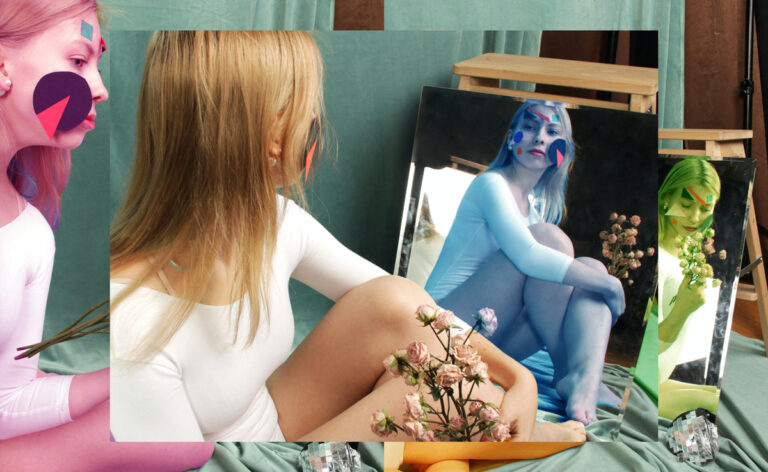New legislation could soon require UK influencers to issue disclaimers on edited body images
It’s 2022 and our evenings look pretty much the same as last year: on and off curfews or, in the case of the UK, waves of Omicron hitting so often that citizens have succumbed to making their own rules on how and when to socialise. This has resulted in hours of binge-watching with no one else but savoury snacks to keep us company. While on an endless scroll through TikTok, however, you’re bound to come across a plethora of “skinny girl sidestep” videos—a viral trend where influencers walk sideways between two walls just to show how lean they are. Although such videos have witnessed an ironic evolution, with users over exaggerating filters to mock other creators, you lowkey end up questioning your dietary choices.
This is exactly what Doctor Luke Evans, general practitioner turned Member of Parliament (MP) for Bosworth, wants to tackle with the Digitally Altered Body Images Bill. Set to present his proposals to the House of Commons today (12 January 2022), the bill calls upon advertisers, broadcasters and publishers—including everyone monetising their content across social media platforms—to issue labels on images of human bodies or body parts that have been digitally altered in its proportions.
“This disclaimer would be similar to the ‘P’ symbol for product placement, for example, seen on commercial television in the UK,” Doctor Evans wrote on his website, adding how the bill seeks to tackle eating disorders and body confidence concerns triggered by unrealistic expectations perpetuated by the media—which can also result in broader effects on our physical and mental health.
Today I’m launching my new campaign, #RecogniseBodyImage, asking the Government to recognise body image for the first time in UK law. You can help by signing the petition here: https://t.co/0V68hqufql (1/3) pic.twitter.com/wAnGKPSuHy
— Dr Luke Evans MP (@drlukeevans) October 29, 2021
“When I was a GP, particularly young women with eating disorders would talk about the fact that they’re driven by these images and think they need to have a perfect physique,” Doctor Evans said in an interview with Sky News, outlining that this extends to males—often talented sportsmen—who then start overtraining and taking unsolicited supplements. In their case, however, most get banned from the sport altogether by testing positive for steroids, just because they were conditioned to believe they didn’t “look right.”
For the MP, one of the biggest concerns is that such ideals are physically unattainable in the first place. “If you doctor your image, make your biceps bigger, your waist slimmer—and there are multiple images reproduced across social media—the problem is you’re creating a perception that no matter what you do, when you go to the gym and how good your diet is, you are never going to be able to reproduce that,” he said.
According to data collected by NHS Digital between April to October 2021 in England, eating disorders and body dysmorphia have risen during the pandemic—with an estimated 1.25 million people suffering from anorexia or bulimia in the UK. Over one million citizens are also proven to be on steroids or image-enhancing drugs. A 2021 inquiry into body image by the Women and Equalities Committee additionally found that concerns about the way we look “start younger, last longer and affect more people than ever before”—with 61 per cent of adults and 66 per cent of children feeling negative, or very negative about their body image “most of the time.”
Further studies have also proved that one in five adults and one in three teenagers are ashamed of their bodies, with nearly 20 per cent of the former demographic feeling “disgusted” about their body image. In perhaps the most shocking set of data by the UK’s largest girl-only youth organisation Girlguiding, it was revealed that 51 per cent of girls aged 7 to 10 feel “very happy” with how they look while the numbers drop to just 16 per cent among those between 11 and 16 (a point in life where most girls start using social media). Back in 2017, 88 per cent of girls aged between 11 and 21 further admitted their stance for wanting airbrushed advertisements to admit that they did so.
“I’ve got no problem with people aspiring to be fit and healthy, but not in a warped sense that we can never achieve” – Doctor Evans
How is the Body Images Bill set to work?
Aiming to address both traditional forms of advertising and newer forms on social media through “influencing” and sponsored posts, the Digitally Altered Body Images Bill is not a call to ban, but a call to inform. “If passed, the Advertising Standards Authority (ASA), UK’s independent regulator of advertising across all media, would develop specific guidelines on how the disclaimer would look, where it would be placed, what qualifies as ‘edited’ and what is a ‘commercial purpose’,” Doctor Evans wrote.
In the interview with Sky News, he acknowledged how MPs from all parties have already stated in support of his bill. Politicians from Norway and the US have also contacted the former GP in hopes of introducing the same requirements back in their countries. As of now, however, it remains unclear whether the proposals will receive government backing.
“Doctor Evans will present the Digitally Altered Body Image Bill to Parliament on Wednesday afternoon as a 10-minute rule bill, which allows backbench MPs to put forward a bill,” the publication concluded. “They often do not get through the first stage but it is a good chance to raise the profile of an issue and see how much support it could have.”





